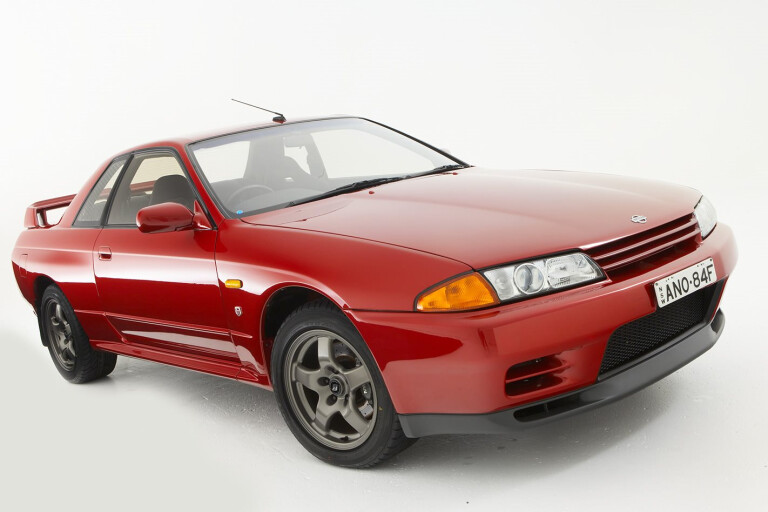
“It should perform well.” This sentence, penned in MOTOR’s August 1989 issue, turned out to be the understatement of the century.
This was first published in MOTOR's November 2008 issue.
The R32 Nissan Skyline GT-R is one of the most legendary race and roadcars worldwide – and, in Oz, is as formidable as Phase III Falcon, an A9X Torana or Brocky’s 1984 Bathurst-winning VK Group A Commodore.
Forget, for a moment, what it did on the track, for although the R32 GT-R decimated its opposition in competition, it was – is – a remarkable roadcar. And while HSV’s W427 is grabbing headlines with 0-100km/h times in the 4-sec region, we clocked the GT-R at 4.80sec to 100 with a 13.10 quarter – in 1990!
 In the same issue (April 1990), the GT-R’s contemporary, HSV’s VL SS Group A, cracked the century in 7.04 seconds, while the Ford Sierra RS 500 Cosworth that won a pair of Bathursts took 6.40sec.
In the same issue (April 1990), the GT-R’s contemporary, HSV’s VL SS Group A, cracked the century in 7.04 seconds, while the Ford Sierra RS 500 Cosworth that won a pair of Bathursts took 6.40sec.
The Porsche 911 Carrera took 6.23 seconds to do the same. The R32 GT-R is a monster and was the quickest GT-R until the recent R35 was unleashed, so much so that our sister mag Wheels dubbed the Obakemono ‘Godzilla on wheels’. The name’s stuck.
The GT-R was not simply an overnight sensation, but part of Nissan’s global ‘901’ plan to become the world’s number One car maker by the mid-90s. In the GT-R, Nissan planned to strip the Ford Sierra Cosworth of it’s world touring car dominance (which included the longest winning streak in Australian touring car history) and establish the Japanese brand as a technological tour de force.
The RB26 DETT straight-six – meaning 2568ccs with twin ceramic turbos – delivered around 209kW (depending what you read and believe) and, while related to the HR31 Skyline’s (and Holden VL Commodore’s) RB30, it featured a twin-cam head and could rev to near 8000rpm (redline was 7500rpm).
It’s 0.8bar of boost saw a driveable, well-mannered car below 4,000rpm, at which point the acceleration was simply phenomenal, not dropping off at any point before the engine’s cut-out. And in a good example, you’ll still experience clinical power delivery that doesn’t dazzle but simply comes into effect almost without any fuss: it simply becomes fast.
 The silky smooth straight line punch wasn’t the only thing (muscle cars could muster that sort of mumbo albeit more brutally), because there the GT-R had supreme traction and drivability. It feature all-wheel drive and all-wheel steer (which the race cars missed out on), with a hydraulic system splitting torque between the front and rear axles.
The silky smooth straight line punch wasn’t the only thing (muscle cars could muster that sort of mumbo albeit more brutally), because there the GT-R had supreme traction and drivability. It feature all-wheel drive and all-wheel steer (which the race cars missed out on), with a hydraulic system splitting torque between the front and rear axles.
Dubbed ATTESA ET-S (Advanced Total Traction Engineering System for All Terrains and Electronic Torque Split), the all-wheel drive system is made up of a computer controlled multiplate clutch encased in oil with a hydraulic clutch assembly.
The torque division is triggered by speed sensors and an accelerometer, which applies pressure to the clutch to vary torque split. There’s even a gauge on the dash informing you where the drive is going, although your hands will obscure the gauge while it’s actually working as you negotiate corners…
Uniquely, the GT-R’s electronics also sense lateral movement, with drive to front wheels reduced as lateral acceleration increased, giving rear-drive handling characteristics. Nissan explained that the R32 was intentionally developed as a rear-wheel drive platform first and foremost, with the front wheels joining the party merely to assist keeping Godzilla heading forwards.
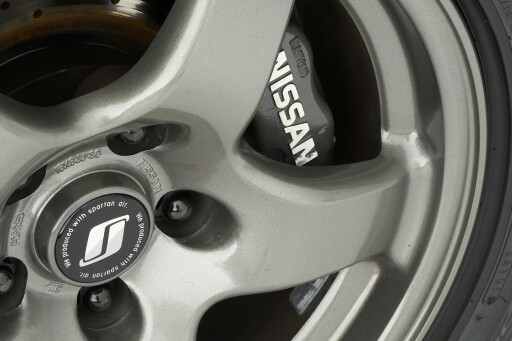 From a standstill, the GT-R’s drive is 100 percent to the 4.11 rear LSD, offering slight wheelspin upon launch, before drive is fed to the front then gradually reduced. It can be provoked into oversteer, but has cornering abilities verging on criminal, meaning it would take an extreme situation to upset it.
From a standstill, the GT-R’s drive is 100 percent to the 4.11 rear LSD, offering slight wheelspin upon launch, before drive is fed to the front then gradually reduced. It can be provoked into oversteer, but has cornering abilities verging on criminal, meaning it would take an extreme situation to upset it.
Indeed, the owner of our subject here claims: “You can hang the tail out, then when you want to straighten it out, you just nail it.” It simply flatters the driver.
The roadcar’s HICAS four-wheel steer system was the third-generation of Nissan’s original Super HICAS system. Similar the Honda Prelude and Mazda MX-6’s systems (but hydraulic rather than mechanical), it initially turns the rear wheels in the opposite direction of the fronts, before reverting to turning all four wheels in unison.
This gives the R32 slow-speed responsiveness and feel, while still improving high-speed cornering.
On the track, the GT-R saw 429kW from an Aussie-built RB26 DETT, mated to a locally-made six-speed Holinger. Numerous magazine tests proved the GT-R outshone its rivals, especially Holden’s VN Group A, in all areas, but was light years ahead in its handling and cornering ability.
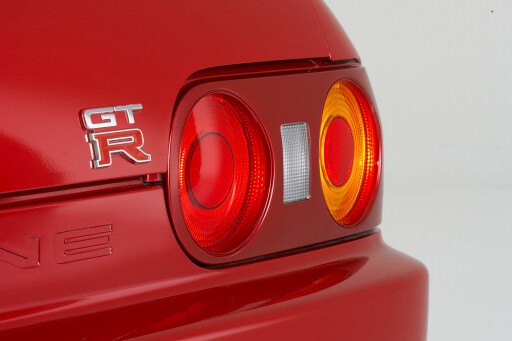 It was such ability that saw an easy pole position at its Bathurst debut in 1990 before a driveshaft sent it out while leading. It brought with it steaming controversy, not helped by the fact that Jim Richards waved as he cakewalked past his opposition.
It was such ability that saw an easy pole position at its Bathurst debut in 1990 before a driveshaft sent it out while leading. It brought with it steaming controversy, not helped by the fact that Jim Richards waved as he cakewalked past his opposition.
Nissan Australia’s then marketing head, Allan Handberg, wasn’t disappointed, straight out boasting that Bathurst 1991 was the GT-Rs. And he was right. In 27 appearances, the GT-R won 16 times, winning 9 from 11 in 91.
The next year – its swansong – Mark Skaife won four of nine rounds to secure the championship, before the GT-R almost lost Bathurst to Dick Johnson and John Bowe’s Ford Sierra, after Richards slid the car – almost fittingly, in its final event – onto the wall out side of Forest’s Elbow.
But it was the reception of the crowd that sparked Richo’s non-nonsense response, as beer cans and jeering greeted the Skyline steerers: “You’re a pack of arseholes.” Game over.
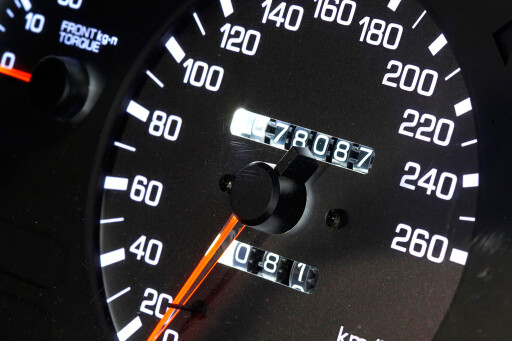 Did Richo’s comments cement the GT-R as a legend? Sure, the icon had been established, but the success and controversy of this car has been unparalleled in touring car history globally, yet alone in Australia. Some people claim the GT-R is the car that killed the Group A category and, locally, was part of a sinister plot to kill the Aussie V8s.
Did Richo’s comments cement the GT-R as a legend? Sure, the icon had been established, but the success and controversy of this car has been unparalleled in touring car history globally, yet alone in Australia. Some people claim the GT-R is the car that killed the Group A category and, locally, was part of a sinister plot to kill the Aussie V8s.
By that fateful race, Handenberg was responsible for convincing Nissan to import a batch of GT-Rs – two batches of 50 GT-Rs, built between April and August 91 – making Australia the only market to receive the car outside its native Japan. Priced at a cool $110,000, they weren’t cheap. Only 63 had been sold as the GT-R bowed out of local competition.
The locally delivered versions saw more than 200 changes, so spotting an original isn’t impossible. Alterations included the high-mount stoplight, 260km/h speedometer (JDM versions had 180km/h versions) and of course different engine decals, while a Nissan badge instead of the Skyline S was fitted to the R32’s aluminium bonnet and boot lid. The audio system, windscreen and jack were also unique to our hottest 100.
But these are the cars to own today. The flood of grey imports into Oz has made a Japanese domestic market GT-R a brilliant buy in 2008, with Godzilla’s on the lot for as low as $15k. Let’s face it, unless you’re a serious investor and are going to park your GT-R in the hopes of a future cash haul, why wouldn’t you buy the same stonking machine from the same factory as a grey import?
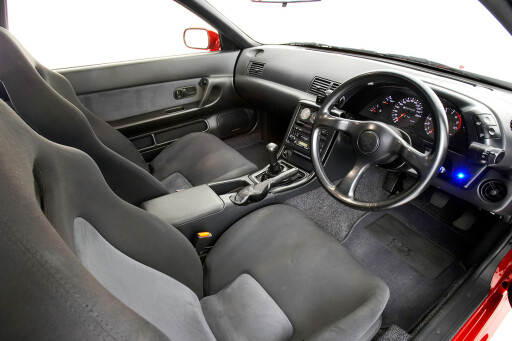 Chances are it’ll have been a time attack or drift vehicle, and any hope of originality may’ve gone up in tyre smoke. Still, if it’s performance you’re after, this may not bother you.
Chances are it’ll have been a time attack or drift vehicle, and any hope of originality may’ve gone up in tyre smoke. Still, if it’s performance you’re after, this may not bother you.
Make sure that it’s a genuine GT-R: R32 coupes were also sold in Japan as the 2.0-litre GTS-T, so it’s a matter of changing the sheetmetal for the GT-R look. And RB26s aren’t expensive to drop in a lower-spec Skyline…
The flood of grey imports has also hampered the collectibility of the Aus-delivered versions, which are a genuine bargain at around $30-40k (remember that Walkinshaw for $80k?). This also means GT-Rs are more likely to gain value as the thrashed grey-import dungers are written off, worn out and left for dead, leaving a pristine few to remain. Grab one while you can.
The Good
1. Supreme performance: The R32 is a supremely fast car even two decades on, yet is drivable and comfortable
2. Mystique: An original, unmolested R32 is a rare horse, and its all-conquering ability means it is both revered and feared.
3. Affordability: despite its age, if the GT-R was to line up at Bang For Your Buck in 2008, it’d easily have been the quickest car in the field…
The Bad
1. Grey imports: The hat-backwards power at all costs brigade has massacred the brilliant work of Nissan’s engineers, as the R32 is a bang for your buck legend. Winding up boost, ECU changes – the lot – will transform the car from silky smooth to rough as guts
2. Infamous/polarising opinions: There are people who will sneer at your GT-R as weapon of evil; but then again, this may be actually be a positive for some owners…
3. Age: While a modern legend, the GT-R is nigh on 20 years old. And while they’re reliable, components that have simply aged may be difficult and costly to replace, while some interior plastics reveal the car’s late-80s origins.
What’s it going to cost?
Here’s the dilemma: if you’re after an Australian-delivered GT-R, you’ll pay a lot more. We found a Metallic Black local GT-R with 114,000kms on it for a cool $55k. Saying that, in the $40k region we found a heap of modified grey imports with massive power, while at the other end of the scale found a 140km grey import for a mere $11,500. How much is the collectibility and nostalgia worth?

COMMENTS